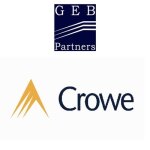The Italian Supreme Court has ruled on the application of several methods of transfer pricing, with reference to the comparable uncontrolled price (CUP) method and transactional net margin method (TNMM).
The judgment from September 12 2022 originated from a dispute raised by tax auditors, related to a client’s use of the CUP method in the year in which the audit occurred. In this case, tax auditors were in favour of the TNMM method instead. The latter method had, moreover, been used by the company during the subsequent tax periods.
The appeal was ruled in favour of the client, which is why the tax authorities appealed to the Supreme Court.
The Supreme Court judges observed that the first version of the OECD Guidelines provided for the so-called ‘hierarchy of methods’. The CUP method was considered the most recommended, while the transactional methods (TNMM and profit split) were deemed last resort methods.
The principle of this hierarchy has evolved over time, and the 2010 OECD Transfer Pricing (TP) Guidelines recognise the equal footing of all methods, whether traditional or transactional. Further, the OECD Guidelines emphasise the need to proceed with the most appropriate method based on the case at stake.
From the OECD TP Guidelines, however, emerges a so-called ‘attenuated hierarchy’. This principle dictates that, should both the traditional methods (CUP, cost plus, resale price) and transactional methods be equally viable, the traditional method should be preferred. Similarly, if the CUP and another method can be applied with equal reliability, CUP is the preferred method.
These principles have also been incorporated in domestic provisions, namely the Ministerial Decree of 14 May 2018. Article 4 of the Decree outlines and defines five methods for the valuation of a controlled transaction under the arm's length principle, stating that such valuation is determined by applying the most appropriate method to the circumstances of the case.
The Supreme Court, while recalling the concept of the most appropriate method, ruled that the TNMM approach cannot be rejected without adequate justification. Further, the Supreme Court decreed that the TNMM method can be used when:
The investigation period has been selected;
Comparable companies have been identified;
Appropriate accounting adjustments have been made to the financial statements of the tested party; and
Differences between the tested party and comparable companies in terms of risks assumed or functions performed, and a reliable indicator of profitability, are duly considered.
The above principles had already been stated in other Supreme Court decisions such as judgment No. 15668 of May 17 2022.
In the case at stake, the court of second degree failed to ascertain the facts, rejecting the TNMM method without providing adequate reasons.
The Supreme Court judges made a careful assessment of the reasons given by the court of second degree on the arguments in support or rejection of one method over another (considering the comparability analysis outlined in the OECD principles).
However, the Supreme Court referred only to the reasons that had led the second instance judges to exclude the TNMM method. Nothing, however, was said regarding the use of the CUP method.
Although it is pointed out that the analysis should focus on the actual reliability of the two methods, and should both methods be considered reliable, the choice should fall in favour of the application of the CUP method.
The risk is that, since the court of second degree will have to proceed with a new assessment of applying the TNMM method, they may validate that method without assessing the CUP method which, under certain conditions, should be deemed the preferable approach.
Although some critical aspects of the judgment in question are self-evident, one cannot deny the importance of this decision. The decision reinforces the jurisprudential orientation, which fully applies the principles outlined by the OECD, and constitutes a point of reference to consider when applying TP methods in Italy.













